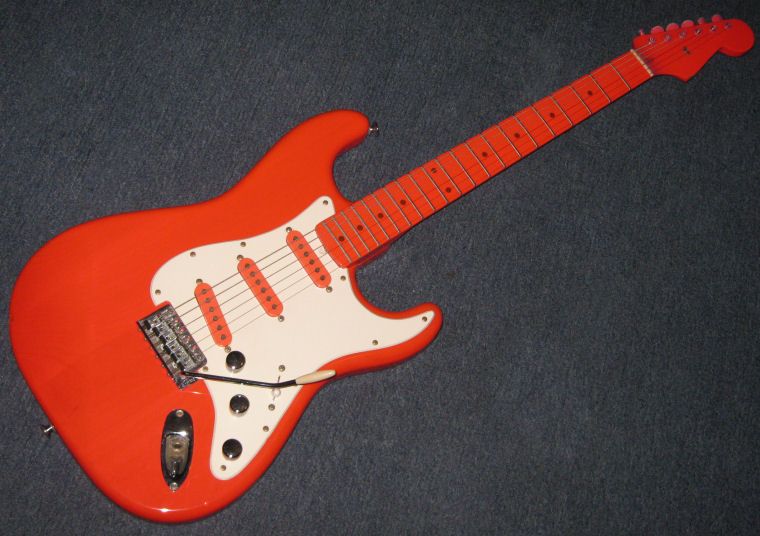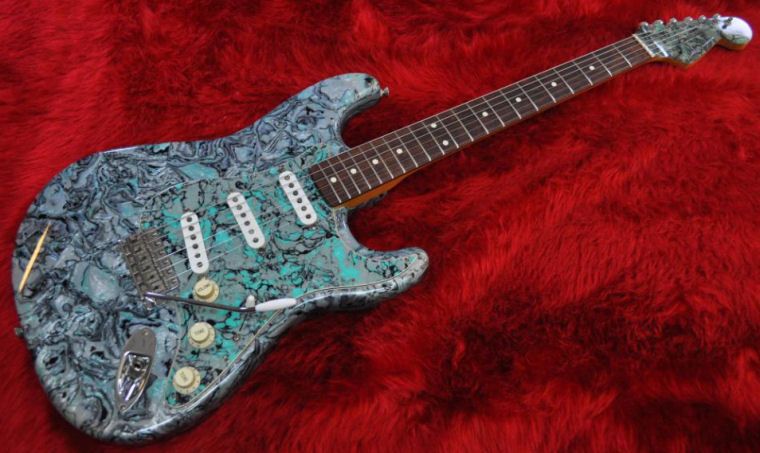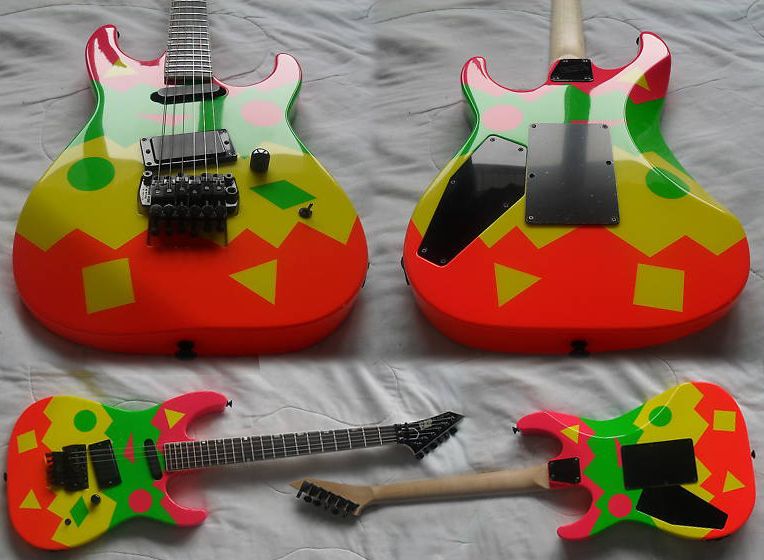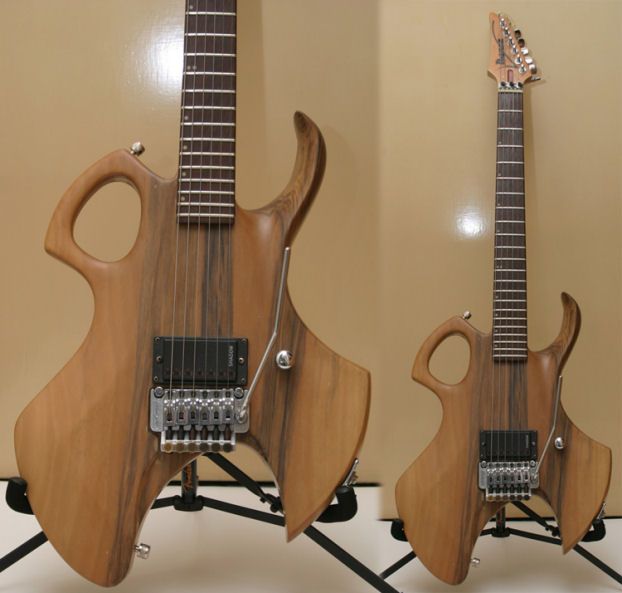guitarz.blogspot.com:

Whilst at risk of alienating the anti-Strat contingent out there, today I want to talk about the background to this particular little-known instrument, the DiMarzio Cellophane Strat. It's just a little footnote at the bottom of the history of the Strat, the DiMarzio corporation, and Japanese guitars in general, but it's footnotes like these that I find particularly fascinating.
I originally saw this guitar for sale on eBay in
March 2008 and instantly fell in love with it. In the late 1970s/early 1980s, DiMarzio - known for their pickups - branched out into a whole range of guitar parts - not just pickups and hardware but bodies and necks too. You could build a whole guitar exclusively from DiMarzio-branded parts. I remember this well as I used to have one of their catalogues from the period and in my mind's eye I was putting together various combinations of parts to create my dream axe.
The seller of this particular guitar claimed that it was put together from DiMarzio parts as a showpiece for the 1984 NAMM trade show. Unfortunately I have nothing but his word to either confirm or refute this, but it does at least sound plausible.
He also mentioned that the body and neck were made for DiMarzio by Charvel during their now legendary San Dimas era, so as far as I was aware this red Strat was, despite not being a Fender, an American guitar.
The auction finished without anyone bidding on the guitar, and I was so annoyed at myself for not bidding as I could have bought it for the starting price. However, soon after it was re-listed, and this time I made sure to put a bid or two in. However, I was up against a competing bidder this time around, but they didn't put up a fight and I won the auction at a little over the starting price.
When the guitar arrived in
May 2008 I was surprised that the deep red colour looked a lot more salmon-pink in real life, although it seemed to change depending on the lighting conditions. It turns out that there are no identifying names or marks on the guitar anywhere, other than the bridge saddles being stamped "DiMarzio".
The body and neck - as you can see - are coated in a see-through red plastic-like finish, this being known as the "cellophane" finish. The grain of the wood beneath is quite clearly visible, despite the vivid colour. I have seen one or two other examples, but these have been "super-Strat" types rather than the traditional Strat-layout. Some guitars just featured the cellophane red neck on non-cellophane bodies, such as played by guitarist Earl Slick (who of course is known for his work with David Bowie). This is understandable, as DiMarzio parts would have beed used in various mix and match combinations. As far as I am aware, they were never sold as completed guitars. (But if you know differently...)
Recently, a guy named Steven Beall contacted me via the comments of this blog. He had this to say:
I have one of these red necks I bought in 1985 and love it. A few years back I heard rumors they were made for Dimarzio by Charvel and did some investigating. I contacted Steve Blutcher at DiMarzio and he said these cellophane necks were made in Japan by a small company called Harayama (now defunct) not Charvel. I would assume that the matching bodies were also made by that company because of the finish.
Charvel did indeed start making bodies for DiMarzio in the late 70s - early 80s to fill a gap in cash flow until Grover Jackson could get his own line of guitars under production but that agreement ended prior to 1984 when the first of these cellophane necks and bodies were made because Charvel was well into the production of its own Charvel brand and had no need or available resources to sub-contract parts manufacturing out to other companies.
Sadly, as I found out too, not only is this guitar not USA made, it's not a Charvel either. I hope this helps clear up any questions.
Far from being disappointed, I think this makes the story even more interesting. I have no problem with this being a Japanese guitar - I'm a big fan of Japanese-made guitars. They are often finely-crafted instruments with top-notch attention to detail. However, I'm not aware of the name Harayama - very possibly this was another factory that built guitars for other brands.
If anyone reading this has any DiMarzio or Harayama-built guitars, with cellophane-finish or otherwise, please get in touch!
G L Wilson
NB: There are a lot of blogs STEALING content and bandwidth. If you read this anywhere else but on guitarz.blogspot.com then you are reading a blog that STEALS content. Please support original bloggers!
 We've not looked at any basses recently on Guitarz, so I thought it was high time we tried redressing the balance a little. I find myself looking more and more at semi-hollowbody and thinline basses. There is something very elegant about the design that lends itself quite nicely to the bass, giving it a distinct retro look.
We've not looked at any basses recently on Guitarz, so I thought it was high time we tried redressing the balance a little. I find myself looking more and more at semi-hollowbody and thinline basses. There is something very elegant about the design that lends itself quite nicely to the bass, giving it a distinct retro look.






















































